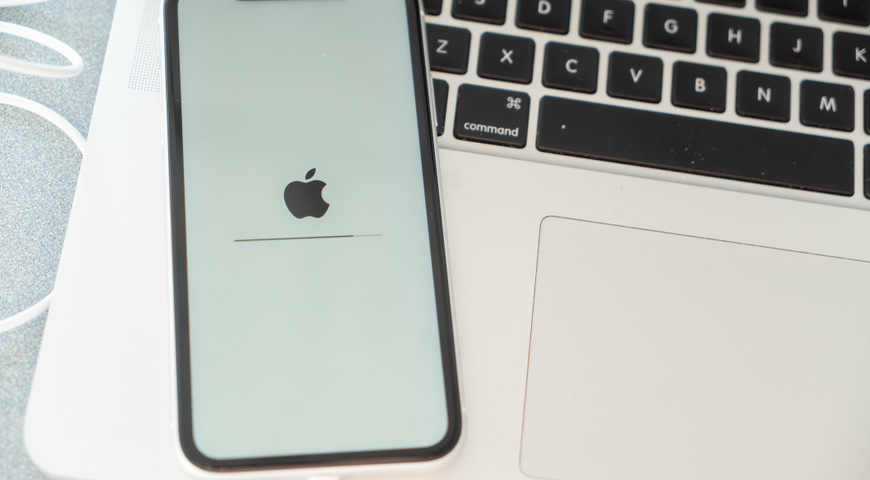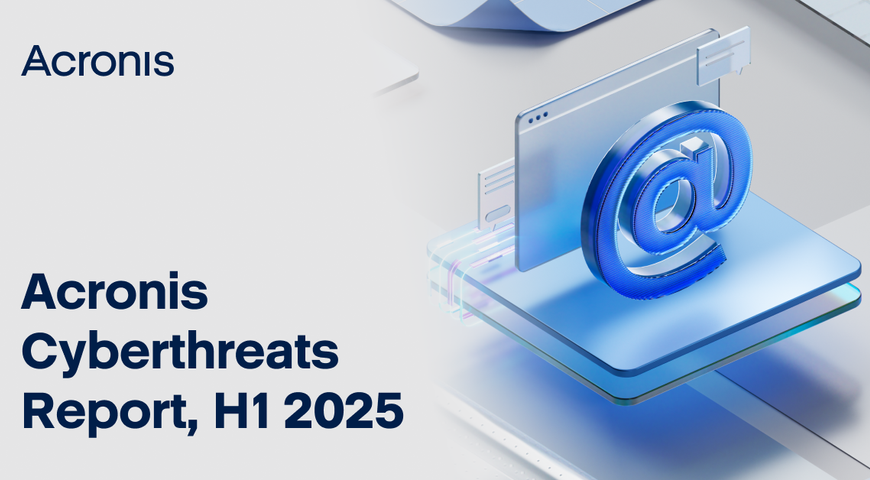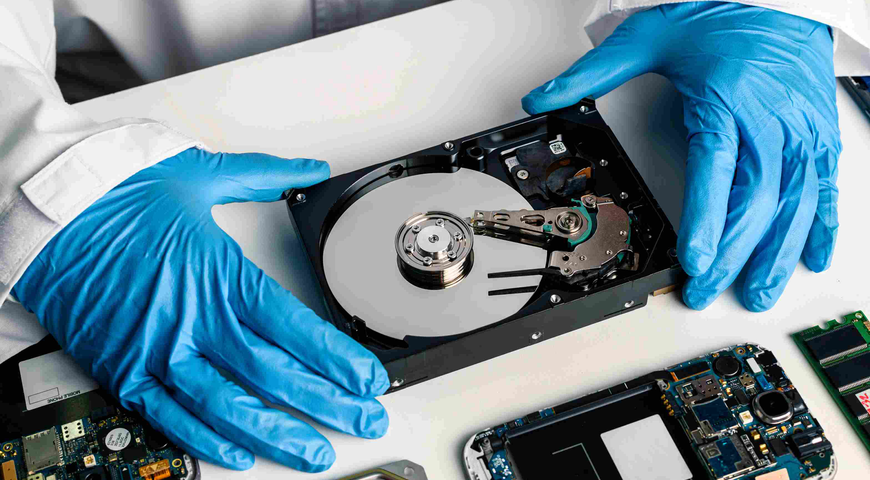
Nowadays, everyone has a mobile phone in their pocket, which allows them to listen to music, watch videos, take photos and find ways to entertain themselves with a few clicks. Unfortunately, we all have experienced losing our priceless data. It happens unexpectedly, and when something like this occurs, we regret it if we haven't ensured a backup option in case of emergencies. For that reason, backing up your iPhone is always a good idea.
Sometimes, your iPhone stops working, and you want to restore its healthy condition with a factory reset. Then you need to use a backup to get back all your precious photos, videos, apps, etc., or you have just bought a new phone that needs to be set up and transfer all your important data. In these cases, a backup is essential.
Depending on the platform you're using, there are a few ways to restore an iPhone from a backup. Windows users (and those with older macOS versions) can use iTunes or iCloud to back up and restore their valuable data. If you have a Mac running macOS Catalina or a newer version, you can use the Finder application instead. Another option is backing up your iPhone to restore your information directly from iCloud without involving a computer. Let's look at the backup processes closely and help you complete them step by step
How to restore iPhone from a backup — different solutions
To restore your iPhone from iCloud, follow these steps:
- Open iCloud and proceed with the device setup until you reach the Apps & Data screen.
- Tap on "Restore from iCloud Backup." Sign in using your Apple ID.
- Next, choose the backup you want to restore by selecting it from the list of iCloud backups, then tap restore. Each backup will have a date and size associated with it. If necessary, you may be asked to update the software before the restore and follow the on-screen instructions to complete the restore process.
- When required, sign in with your Apple ID to restore your apps and purchases.
To restore iPhone from backup using iTunes, follow these steps:
- The first to restoring the backup on an iPhone is opening iTunes on your computer.
- Connect your iPhone to the computer using a USB cable. Enter your passcode, or backup password if required.
- Look for the iPhone icon located in the left corner of the iTunes window. Click on it.
- Click on "Restore Backup."
- Choose the backup you want to restore, then click on "Restore."
- Once your iPhone restarts, you will see the Apple logo, but you have to keep it connected to the computer ,and wait for it to sync and complete the process before disconnecting. Your iPhone will be restored successfully a few minutes later, and you can use it as usual.
To restore an iPhone by using using Finder application, follow these steps:
1. Open Finder on your computer.
2. Connect your iPhone to the computer using a cable to start the restore process. Enter your passcode if required.
3. Select your iPhone device in the column under Locations.
4. Click on the General tab, then select "Restore Backup."
5. Choose the desired backup from the list. Tap restore and wait until the restoring process is completed.
While the backup is in progress, the buttons in the Backups section appear grayed out. Additionally, a status message and a graph at the bottom indicate that your iPhone is currently being backed up. Once the backup is completed, the buttons will become active again. The last backup on this Mac will show today's date and time of completion.
These steps will help you successfully restore your iPhone using the Finder application!
Why is it important to backup your iPhone?
Backing up your iPhone is crucial for
safeguarding and restoring your data when an iPhone might experience a crash or
physical damage. Suppose you accidentally drop your iPhone on the sidewalk or,
heaven forbid, in the toilet. There's a risk of losing information and files,
such as photos, app data, videos, contacts, and even all your apps.
This will be a huge pain for every user, but if you back up your iPhone using iCloud backup, you will have the priceless option to restore your important data and files stored on the device.
By creating backups, iPhone users can rest assured that their iPhone data remains secure and protected and they will have the opportunity to restore it when needed. Backing up your iPhone, iPad, or iPod touch allows you to copy and save your precious data collected through the years
Few options on how to restore iPhone from backup after setup
iCloud Backup
As an iPhone user, you can back up your iPhone through iCloud backup. Turn on your device, and you will see the Apple logo. A few seconds later, you should see a Hello screen. Then open iCloud and find the iCloud backup section.
If you have previously set up your device, you will need to tap erase iPhone, which will erase all your data. Once that is done, follow the setup instructions on the screen until you reach the Apps & Data screen. Then tap Restore from iCloud Backup, choosing one of the recent backups, where your Apple ID password will be required to proceed.
Tap iCloud backup from the options provided, considering the date and size of each backup, and choose the one that's most relevant to you. Pay attention to whether you choose a recent and not an old backup. Then select the iCloud backup file from the list and click Restore Backup. Once you've made your selection, the transfer process will begin. If a message indicates a newer software version is required, simply follow the instructions on your screen to update accordingly.
During the restoration process, you will be prompted to sign in with your Apple ID to retrieve your apps and previous purchases related to your iCloud backup. If you have used multiple Apple IDs to purchase content on iTunes or the App Store, you will be asked to sign in with each ID. If you cannot recall your password, there is an option to skip this step and sign in later. However, please note that accessing the apps will only be possible once you have successfully signed in using your Apple ID password.
Ensure you remain connected to a Wi-Fi network throughout, wait for a progress bar to appear, and complete the iCloud backup. The time it takes for this progress depends on factors such as size and network speed. The process may take a few minutes to an hour to finish. To avoid interruptions in the process, make sure not to disconnect from Wi-Fi, as doing so would cause the progress bar activity to pause until reconnection is established.
When setup has been completed, you will see the home screen. Your apps, photos, music, and other data will continue to be restored in the background over the next few hours or days, depending on the amount of information you have stored. Stay connected to Wi-Fi and keep your device charged to allow the process to finish successfully.
iTunes Backup
Here's a guide on how to restore an iPhone using iTunes.
- On a Mac with macOS Catalina or later, open the Finder. On a Mac with macOS Mojave or earlier, or on a PC, open iTunes.
- Next, connect your device to your computer using a USB cable. If you receive any prompts asking for your device passcode, or to establish trust with this computer, simply follow the instructions provided on the screen.
- When your iPhone, iPad, or iPod touch shows up in the Finder window or iTunes, go ahead.
- Now select the option to restore a backup.
- Take a look at the backup dates. Choose the one that is most relevant to you.
- Click restore backup button, and patiently wait for the restoration process to complete, where the progress bar might need a few minutes to an hour to fill up. If required, make sure to enter your password for an encrypted backup.
- Once your device restarts, keep it connected. Wait for it to sync with your computer. You can disconnect it once the syncing is done. And you are ready, your iTunes backup will be completed, so you can enjoy your device again.
Acronis True Image — The ultimate iPhone data recovery software
When it comes to safeguarding your data, everyone wants the best recovery software. Acronis True Image has been at the forefront of the market for years, consistently delivering exceptional mobile backup and data recovery services. Our team is dedicated to innovation, ensuring our software remains a leader in the industry with regular updates and advancements.
Losing important data is incredibly stressful and damaging, so we designed Acronis True Image to recover your priceless data and files in seconds, with only a few clicks. Our software offers a comprehensive suite of cybersecurity and data recovery services, and we are committed to continuously developing upgrades.
Choosing Acronis True Image means you’re making the best decision for protecting your Apple devices. We prioritize data security and recovery so you can rest easy knowing your information is safe in the face of unexpected challenges. In conclusion, if you’re looking for the best data recovery software, you’ve found it with Acronis True Image!
Choosing the right storage option and backup type.
When buying an iPhone, everyone needs to choose the right storage option individually because storage needs differ. Some people always want to take photos and videos and listen to music all day. This, of course, needs a lot of storage, and sometimes, by mistake, we choose to buy a phone with less storage than we need. Luckily, there is an option for paid cloud storage, which solves this problem.
Checking and updating your iOS version
You must always check when using the latest version of iOS on your devices. Thus, you will have access to the latest software features, and your devices will run smoothly and bug free. Another benefit of updating your iOS version is receiving the latest upgrades to the software and applications.
If you need to back up files on your new device, the latest software will be required to ensure the backup process will be complete without any distractions or disconnections
Cloud storage vs. Local backup
Each method has its advantages and disadvantages. When using iTunes or Finder, you don't have to depend on the cloud. It also means that you can only restore the backup from the Apple account on your computer; you must click restore backup after you have selected to reset the iPhone. If your computer crashes, you'll lose your backup. The positive aspect is that you can encrypt an iTunes or Finder backup to protect your passwords, health information, and other sensitive data.
If you use iCloud storage instead as your backup solution, you won't have to worry about any computer issues affecting it. It automatically creates backups and is accessible from anywhere. You can also check when the last successful backup was recorded. The best part is that you can easily backup and restore your data directly from your phone throughout the process without using iTunes or Finder. Remember, if your recent backup consumes a lot of data, you might have to consider upgrading to a paid iCloud account to receive more storage.
Disabling "Find my iPhone" on the device
The "Find My" feature is incredibly helpful, allowing you to locate your Apple devices easily. It used to be called "Find my iPhone." However, it was renamed with the release of iOS 13 since it now works with your iPad, AirPod, Apple Watch, and MacBook and lists the latest backup from any of your devices.
Sometimes, disabling the "Find My iPhone" feature is necessary.
- When you want to reset or restore your device, bringing it back to its original condition. You may also need to add the encryption password when executing restore backup on your iPhone.
- If you need to take your device for service at an Apple store and want to disable the feature.
- Before selling or giving away your device, it's important to turn off "Find My iPhone."
The reason behind disabling the "Find My iPhone" tool is a security feature known as Activation Lock. Its purpose is to prevent access by locking the device and ensuring that only the owner's Apple ID can be used. Activation Lock is automatically activated when you enable "Find My iPhone."
Before restoring a backup or transferring ownership of your device, it's essential to disable Activation Lock by turning off "Find My iPhone."
Connect your iPhone to your computer
Connecting your iPhone to the computer is necessary, when you want to access iPhone files on the PC or transfer files between your iPhone and the computer. So how can you connect your iPhone to your computer when it's necessary?
If you're insecure about how to do it, there's no need to worry. I'll now explain four methods that you can use to connect your iPhone to a computer. By doing so, you will be able to restore your iPhone from a Mac backup or computer backup and sync your valuable files.
Method 1. Connect iPhone to Windows PC via iTunes
Do you want to access and view your iPhone files from a computer? Do you need to transfer files between your iPhone and computer? If you do, here is the first method to do it.
To get started, install iTunes on your computer. Connect your iPhone to your laptop or PC using a USB cable. This will allow you to sync files like photos, movies, TV shows, tones, books, and more with your iPhone. Additionally, you can also open iTunes and use file sharing of all your data files between your devices.
To connect an iPhone to a laptop or Windows PC with iTunes, follow these simple steps:
- Start by unlocking your iPhone and connecting it to your laptop using a USB cable.
- Watch for iTunes to launch on your computer automatically.
- Look for the "Device" button in iTunes and click on it. From there, you can select the type of content you want to either sync from your computer to your iPhone or back up from your device.
To sync data from your computer to your iPhone; Choose a category like Music, Movies, TV shows, Photos, or information. Then select the files you wish to transfer and hit the "Sync" button.
That's it! With these steps, you'll be able to manage data between your iPhone and laptop without any hassle.
Method 2. Connect iPhone to computer with a USB cable
The easiest way to link your iPhone, iPad, or iPod to a computer is by using a USB cable. You won't require iTunes or any external software for this method. However, although it's convenient, using a USB cable only allows you to browse and transfer photos and videos from your iPhone to the computer.
If you intend to view or transfer certain types of files, this method won't work. To establish a connection between your iPhone and a PC using a USB cable and transfer your iPhone photos to a PC, follow these steps:
- Connect your iPhone to your computer using a USB cable.
- Unlock your iPhone. Trust the computer.
- Open "This PC” on your computer. Look for your iPhone, under its name. If you can't find it, you may need to troubleshoot the issue of "iPhone not showing up on PC."
- Once you locate your iPhone, navigate to the "Internal Storage" folder, then open the "DCIM" folder, followed by the "100Apple" folder. Here you will find all the photos and videos stored on your iPhone.
- To transfer, or backup files and pictures from your iPhone to the computer, simply paste these items manually into your desired location. By following these steps, you'll be able to transfer photos and videos from your iPhone to a PC.
Method 3. Connect iPhone to a computer with a wireless connection.
The methods above require a USB cable to connect your devices. If you don't have a USB cable available, you will need a wireless connection. Fortunately, with the help of cloud-based services, you can connect your iPhone and laptop wirelessly.
Here are the steps to connect your iPhone and computer wirelessly:
- On your iPhone, navigate to "Settings " then select "[your name]." Finally, tap on "iCloud."
- For example, if you wish to transfer photos between your iPhone and PC, access the "Photos" section in iCloud settings and enable "iCloud Photos."
- On your PC, open a web browser and then go to iCloud.com. You have to sign in using the Apple ID password on your iOS device. Tap iCloud, choose "Photos," and you will be able to view all of your iPhone photos from your computer. If you want to save any photos or videos from your iPhone to the computer, simply select them. Click on the "Download" button.
Following these steps, you can connect your devices without a USB cable.
Benefits of restoring from backup
The main objective of creating backups is to have a copy of your data as a backup file, that can be used in case the original data becomes inaccessible or damaged. Primary data failures can occur due to reasons like hardware or software malfunctions, file corruption, or even human errors such as deletion or intentional attacks like viruses or malware. Having the option to restore data from a backup on iOS devices enables individuals to restore their data from a point in time and recover from unexpected incidents.
It is crucial to store the backup on a medium to safeguard against any loss, or corruption of the primary data. The alternate medium can be kept either in the same location as the data or at a remote site like personal cloud storage. In situations where there might be weather-related risks, having copies of the data stored remotely could prove beneficial.
To ensure effectiveness, it is recommended that copies be created on a consistent and regular basis. This minimizes the risk of data loss between backups. The longer the time gap between backups, the greater the potential for loss when recovering from a backup.
The Importance of data backup and restore software for iPhone
The primary purpose of creating a data backup is to ensure the safety of your information, whether documents or treasured family photos. Having an archive allows you to swiftly and seamlessly recover your device in case of unexpected circumstances. Surprisingly, as of 2023, 20% of individuals have never backed up their devices. Although this might not appear significant at first glance, let's consider the frequency at which data is lost.
Therefore envision a data backup as the foundation of your disaster recovery strategy. By backing up your devices you're already one step ahead in protecting against data loss.
Conclusion
Backing up your iPhone is the single best habit you can adopt to protect irreplaceable photos, messages and app data. whether you use iCloud for automatic, wireless backups, Finder/iTunes for encrypted local copies, or a third-party tool like Acronis True Image for extra recovery options, pick a reliable method, keep iOS and your backup software updated, and verify backups regularly by checking timestamps and doing occasional test restores. remember to enable encryption when available, secure your Apple ID, and maintain enough storage so backups complete uninterrupted. with these steps in place, restoring, migrating, or recovering your device becomes fast, predictable, and stress-free.
About Acronis
A Swiss company founded in Singapore in 2003, Acronis has 15 offices worldwide and employees in 50+ countries. Acronis Cyber Protect Cloud is available in 26 languages in 150 countries and is used by over 21,000 service providers to protect over 750,000 businesses.




